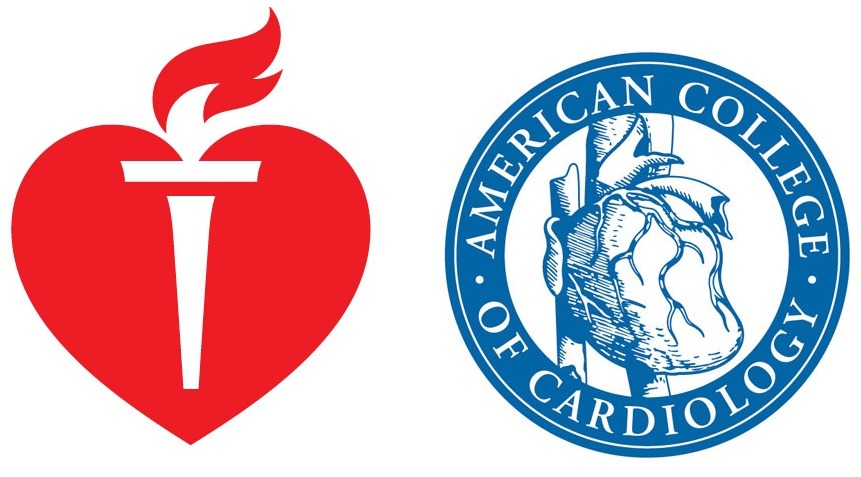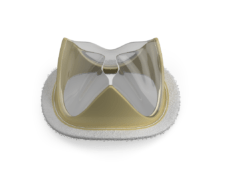 New joint clinical practice guidelines on the treatment of patients with valvular heart disease have been issued today by the American College of Cardiology (ACC) and the American Heart Association (AHA). The 2020 ACC/AHA Guideline for the Management of Patients With Valvular Heart Disease were published in the AHA’s journal Circulation and in the Journal of the American College of Cardiology.
New joint clinical practice guidelines on the treatment of patients with valvular heart disease have been issued today by the American College of Cardiology (ACC) and the American Heart Association (AHA). The 2020 ACC/AHA Guideline for the Management of Patients With Valvular Heart Disease were published in the AHA’s journal Circulation and in the Journal of the American College of Cardiology.
The new clinical guidelines aim to provide evidence-based recommendations to optimise care and management of patients with valvular heart disease, and replace the 2014 guidelines and a focused update from 2017.
In particular the 2020 updated guidelines highlight the expanding indications for transcatheter valve implantation (TAVI), as a result of multiple randomised controlled trials comparing TAVI and surgical aortic valve replacement. The guidelines state: “The choice of type of intervention for a patient with severe aortic stenosis should be a shared decision-making process that considers the lifetime risks and benefits associated with type of valve (mechanical versus bioprosthetic) and type of approach (transcatheter versus surgical).”
Catherine Otto, co-chair of the guideline writing committee, and director of the Heart Valve Clinic at the University of Washington School of Medicine, Seattle, USA, commented: “Current research and new technology continue to transform the treatment of heart valve disease, as updated lifestyle and medication guidance evolve, and less invasive procedures have replaced traditional surgery for many patients.”
AHA and ACC add that treatment of valve regurgitation has improved thanks to more durable treatment options and lower risks surrounding procedures to repair or replace the valve involved.
The writing committee notes that the optimal timing of intervention for stenosis or regurgitation issues depends on the severity of the valve condition, as well as the safety and long-term effectiveness of treatment options. As ongoing clinical research data evolves, the recommended timing of interventions will shift to earlier in the disease course for some patients.
Additionally, the committee notes there are limitations in the research used for some areas of the guideline due to the small numbers of patients with specific types of valvular heart disease. More disease-specific studies and patient-centered trials that focus on each stage of the disease process are recommended.
Patients who have severe valvular heart disease and are being considered for valve repair or replacement should be evaluated by a specialised team working with a primary or comprehensive valve centre. A comprehensive valve centre (Level I) has the resources and capabilities to perform a full range of interventional and surgical valve procedures. A primary valve centre (Level II) can perform TAVI and more limited surgical procedures.
“Clinical studies over the past decade have increased awareness of the prevalence and importance of valvular heart disease in contributing to excess mortality, morbidity and a reduced quality of life, particular in older people,” said Otto. “Simultaneously, clinical studies have demonstrated the safety and effectiveness of new, less-invasive approaches for treatment of heart valve dysfunction. Integration of this expanded evidence base, in conjunction with expert clinical experience, will furnish both providers and patients with the guidance needed to ensure optimal outcomes for patients with heart valve conditions.”
In developing the recommendations, the writing committee used evidence-based methodologies based on an extensive review of available data through March 1, 2020. The review focused on trials, studies, registries, systematic reviews and expert opinion.
“There is a knowledge explosion in medicine today, which can overwhelm the clinician,” said Rick A. Nishimura, co-chair of the writing committee and the Judd and Mary Morris Leighton Professor of Cardiovascular Diseases at the Mayo Clinic in Rochester, USA. “This is particularly true in the area of valvular heart disease, in which multiple investigational trials are being rapidly performed and released, so that it becomes extremely difficult for an individual clinician to keep up with optimal treatments for each specific patient. The Valvular Heart Disease Guideline brings together experts in the field who review all the data and arrive at a consensus opinion for best treatment, outlined in the Class Recommendations.”
“While this guideline focuses on patients with end-stage heart valve disease,” said Otto. “Future research will also lead to treatments to prevent heart valve disease or earlier interventions to slow its progression.”
This guideline was developed in collaboration with and endorsed by the American Association for Thoracic Surgery, the American Society of Echocardiography, the Society for Cardiovascular Angiography and Interventions, the Society of Cardiovascular Anesthesiologists and the Society of Thoracic Surgeons.










